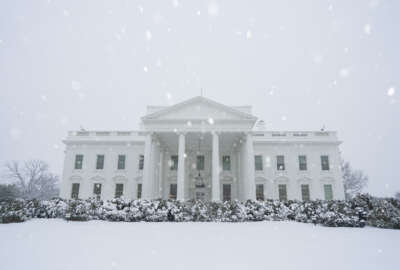
Insight by Verizon
Firefighting just one of many jobs for Montgomery County’s fire department
While the Montgomery County Fire and Rescue Service in Maryland is first on the scene in the event of a fire at a home or business, the department does a lot more...
While the Montgomery County Fire and Rescue Service in Maryland is first on the scene in the event of a fire at a home or business, the department does a lot more than just respond to fires.
It serves as a comprehensive emergency service provider to residents, visitors and commuters all across the county.
“We are the first line of responders to fire, medical and a wide range of other emergency events on a daily basis,” said Montgomery County Fire Chief Scott Goldstein.
The department includes firefighters, emergency medical technicians and a long list of specialists such as paramedics, water rescue teams, building collapse experts and those who handle hazardous materials.
“Being a specialist takes a lot of training,” Goldstein said. “That structure allows our specialists to really be focused on being good at what they do.”
Members of the public play a role in preparing for emergencies, according to Goldstein.
Homeowners check their smoke alarms, schools practice fire drills with their students and families are encouraged to have a “three day plan” in case they ever need to evacuate or leave for an extended period of time.
The Mid-Atlantic region gets hit severe weather throughout the year from winter storms to hurricanes, and that can lead to power outages or property damage.
“We teach that to parents,” Goldstein said. “We teach them that everybody needs to have a plan at home.”
Plans can include storing food and water, having important documents ready to go and creating an exit strategy so family members know what to do if they have to get out in a hurry.
New technology helping on all fronts
Advancements in technology have helped the Montgomery County Fire and Rescue Service transform the way it handles emergency situations, including patient care on the scene.
“80% of what we do is emergency medical services and the skills that our providers have are at such a high level now because of these resources and this technology,” Goldstein said.
The department has the ability to transmit an EKG – a test that records the electrical signal from the heart – directly to a hospital so doctors can monitor it and provide guidance over the phone.
Emergency medical providers have state-of-the-art video laryngeal scopes that allow them look into a patient’s throat and carry out delicate procedures.
“That’s critical for our providers at the patient’s side, doing these life and death skills,” Goldstein said.
Thermal imaging cameras have become much more prevalent for firefighters. The entire department used to only have five or 10 available, but now they come in handheld sizes and are widely distributed.
The cameras display differing temperatures, which can help firefighters detect hotspots in a burning building and potentially locate people trapped in smoky areas.
But the most dramatic change in technology relates to phones and computers.
“Everybody has a smartphone and they can do a lot of information gathering right there in their hand,” said Goldstein. “We have in-car computers that allow our personnel to access a plethora of information from their vehicles without having to pull out DVDs or physical copies of archived information.”
Technology can have glitches, so firefighters are prepared with safeguards.
They carry paper copies of everything they’ll need just in case computer systems go down.
“Two o’clock in the morning is not the time to find your computer’s not working and you can’t access that information about an apartment complex, or you can’t access the fire hydrant layout in a community,” said Goldstein.
‘Outside’ partners play a major role
The Montgomery County Fire and Rescue Service frequently coordinates with federal, state and local partners, and Goldstein credits the Metropolitan Washington Council of Governments for making those relationships stronger.
The council of governments is an organization that includes 300 elected officials from 24 local governments, the Maryland and Virginia state legislatures and U.S. Congress. Every month, more than 1,500 officials and experts connect through the group to share information and develop solutions to the D.C. region’s major challenges.
“It is a great conduit for the region,” Goldstein said. “If something happens tomorrow, or next month, we will be better prepared to coordinate because of that planning and exercise.”
The private sector plays a major role too, through hospitals and nonprofits.
“If dozens of people immediately need emergency shelter, we need the help of our nonprofit community and we need the help of community volunteers,” Goldstein said. “That’s outside of traditional local government but it definitely is included in our partnerships.”
Copyright © 2025 Federal News Network. All rights reserved. This website is not intended for users located within the European Economic Area.
Related Stories

USPS next-gen fleet lawsuits dropped, but electric vehicle plans still under scrutiny




